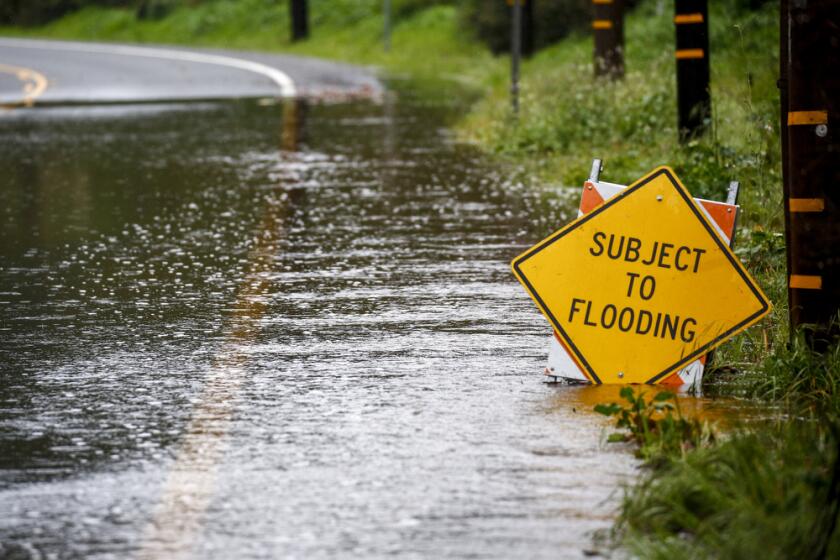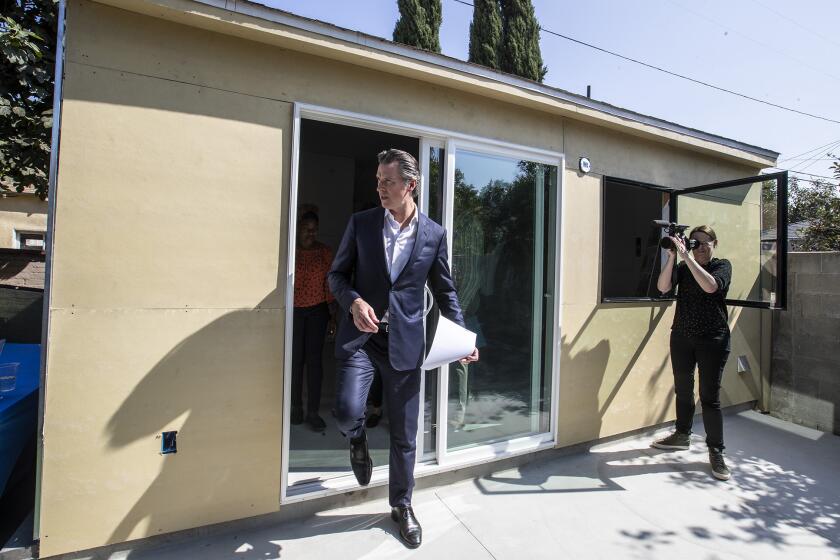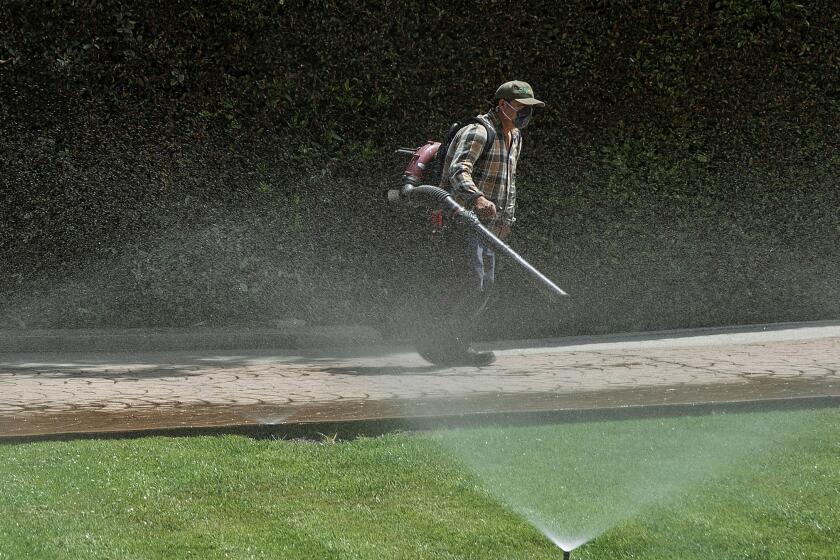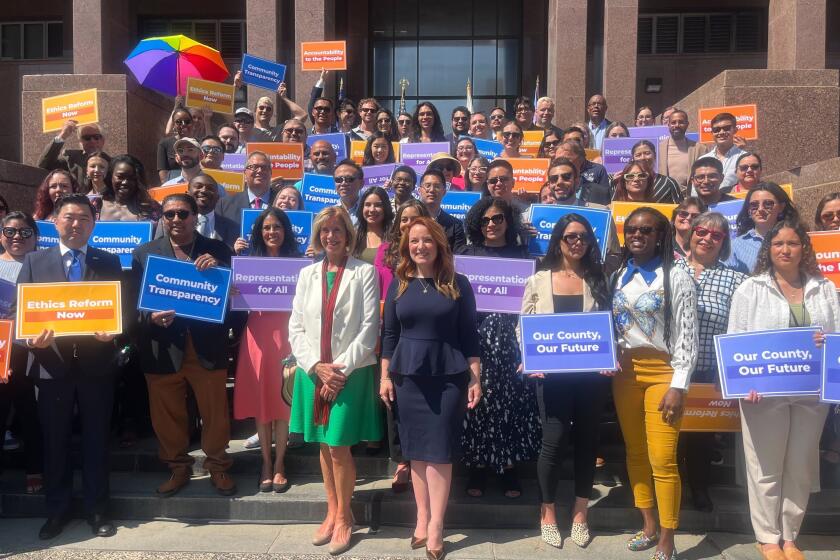Does California have enough water for lots of new homes? Yes, experts say, despite drought
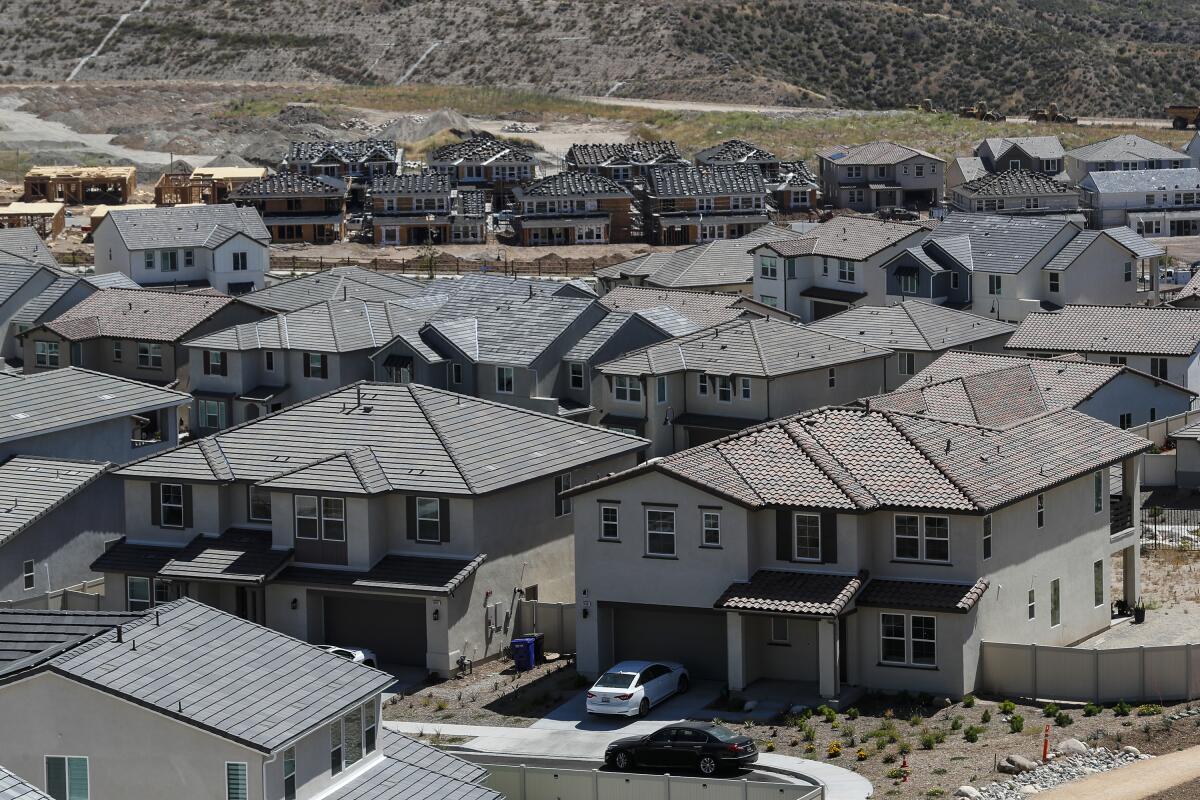
- Share via
To some, it defies common sense. California is once again in the middle of a punishing drought with state leaders telling people to take shorter showers and do fewer loads of laundry to conserve water. Yet at the same time, many of the same elected officials, pledging to solve the housing crisis, are pushing for the construction of millions of new homes.
“It’s the first question I’d always get,” said Jeffrey Kightlinger, who until last year ran the Metropolitan Water District of Southern California, the agency that delivers the water ultimately used by half the state’s population. “How in the world are you approving new housing when we’re running out of water?”
The answer, according to Kightlinger and other experts, is that there’s plenty of water available for new Californians if the 60-year trend of residents using less continues and accelerates into the future.
Case in point: Angelenos use 44% less water per person annually than they did four decades ago, according to the Los Angeles Department of Water and Power.
Some of the changes that have freed up additional water supplies in the past, and could continue to free up water, go unnoticed by many people. New development almost always includes more water-efficient faucets, toilets, appliances and showers than older homes.
Other efforts, such as building wastewater recycling plants to increase water supply, might be costly, but are needed to adapt to more severe droughts with the warming climate.
The landscaping must change too. Think fewer lush lawns and grassy median strips and more gardens filled with native plants.
“The reality is we use water so inefficiently and so poorly, there’s so much opportunity to change that,” said Newsha Ajami, chief development officer for research at the Lawrence Berkeley National Laboratory. “A lot of that opportunity we can use to house people.”
Researchers say California’s cities have big potential to use water more efficiently while taking advantage of stormwater and recycled wastewater.
Most of California’s water isn’t used by people going about their daily lives at home or work. About 80% of water use statewide is for agriculture, with the rest for houses and businesses.
Of that remaining 20%, nearly half goes toward watering lawns and landscapes, washing cars or sidewalks, or filling pools and spas.
In the past, the state’s population grew in tandem with water use. But that changed starting in the 1960s. Between 1967 and 2016, California’s economy increased fivefold and the population doubled, yet water use rose by only 13%, according to a new study by the Pacific Institute, a Bay Area think tank.
In more recent years, the shift has been even more startling. Since 2007, both total and per capita water use in the state has declined substantially. Total urban water use in 2016 was at levels not seen since the early 1990s, the report found.
“California has seen a major decoupling of water use and growth,” said Heather Cooley, the Pacific Institute’s research director and the report’s lead author. “We are using water more efficiently. Those efforts have been incredibly effective.”
Nevertheless, the report found that Californians still waste a lot of water. It determined that the state could further reduce use by more than 30% in cities and suburbs by investing in measures to use water more efficiently.
This means switching out grass lawns for native plants, upgrading leaky pipes and old appliances, recycling wastewater, and capturing stormwater to replenish aquifers.
“We can dramatically reduce our water use while still accommodating growth through efficiency improvements,” Cooley said.
Some small rural and remote coastal areas will find it harder to have sufficient water supplies as droughts persist and climate change makes the state more arid. Central Valley farming towns have seen their wells run dry in recent years. Central Coast towns have prohibitions on new housing because of the lack of water.
But experts said these circumstances do not apply in urban areas of the state with broader and more diverse options for water.
When he was campaigning for office four years ago, Gov. Gavin Newsom called for the development of 3.5 million new homes by 2025 to address the shortage at the root of the state’s affordability problems. Housing construction has been stagnant, and Newsom has largely abandoned that promise. But his housing department has set a new goal for the building of 2.5 million homes over the next eight years to meet California’s needs.
Gov. Gavin Newsom promised unprecedented action to solve California’s housing affordability problem. But nearly all of his highest-profile initiatives have stalled or failed.
State leaders not only are planning for a lot more housing but want to concentrate growth in major metropolitan areas. The reason has largely been framed in terms of reducing greenhouse gas emissions. California’s climate regulators say that the state will not meet its goals for cutting carbon pollution unless residents drive less, necessitating that people live closer to where they work and shop.
Denser development also saves water because it has less outdoor landscaping than single-family home subdivisions.
Combining water savings with more compact growth patterns allows for a lot more people without stressing supply. A separate Pacific Institute study from last year found that the Bay Area could add more than 2 million jobs and homes over the next 50 years, accommodating nearly 7 million more people, and offset all water use from the larger population through that strategy.
New drought rules in Southern California aim to cut daily water use to 80 gallons per person. Water managers say hitting this number is critical.
Yet the disconnect between elected officials pressing Californians to cut water use in their daily routines and arguing for more homes can still be jarring. What is needed in the short term and years from now is different, said Ellen Hanak, director of the Public Policy Institute of California’s Water Policy Center.
People may need to tighten their water-usage belts during droughts while policymakers increase access to more resilient water supplies such as wastewater recycling, she said.
“There’s long-term conservation ethic and there’s being super careful during a drought,” Hanak said. “And when we’re talking about planning for housing, we’re talking about the long term.”
Kightlinger, the former Southern California water executive, had a ready response when people asked him about building new housing.
“I said, ‘Your kids got to live somewhere,’” Kightlinger said. “If we do it efficiently and smartly, we can manage this.”
Times staff writer Ian James contributed to this report.
More to Read
Sign up for Essential California
The most important California stories and recommendations in your inbox every morning.
You may occasionally receive promotional content from the Los Angeles Times.

